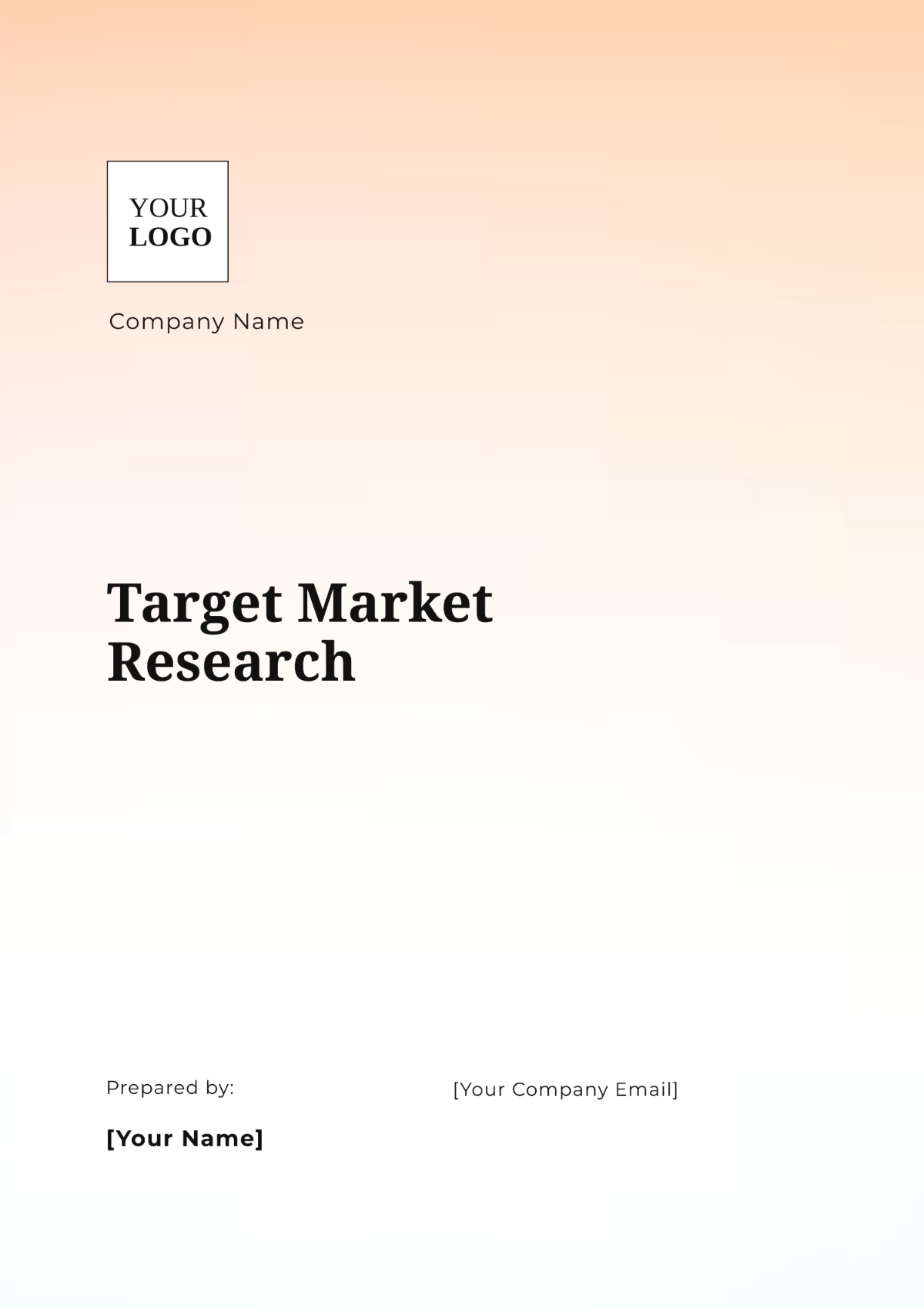Target Market Research
I. Introduction
The primary purpose of this market research is to identify and analyze the target market for [Your Company Name]'s latest product line. This report provides insights into consumer demographics, psychographics, purchasing behavior, and market needs. By understanding these factors, [Your Company Name] aims to refine its marketing strategies and optimize product offerings for maximum market penetration.
Key Findings:
II. Market Overview
A. Industry Background
The technology and consumer electronics industry has experienced rapid growth over the past decade due to advancements in technology and changing consumer preferences. By 2055, it is expected to grow by 8% annually, driven by increasing demand for innovative and eco-friendly solutions.
B. Market Size and Growth
Current Market Size: $300 billion (2055)
Projected Growth Rate: 8% CAGR from 2055 to 2060
Market Potential: Estimated to reach $500 billion by 2060
C. Market Trends
Technological Advancements: Integration of AI and IoT in products.
Sustainability: Growing demand for eco-friendly materials.
Personalization: Increasing need for customized solutions.
D. Regulatory Environment
Governments worldwide are implementing stringent regulations on carbon emissions and promoting sustainable practices, affecting product design and manufacturing processes.
III. Target Market Analysis
A. Demographic Segmentation
Segment | Age Range | Income Level | Location | Education Level |
|---|
Millennials | 25-40 | $50,000+ | Urban | College Graduates |
Generation Z | 20-30 | $30,000+ | Urban/Suburban | High School/College |
Generation Alpha | 10-20 | N/A | Urban/Suburban | N/A |
B. Psychographic Segmentation
Values: Sustainability, innovation, and convenience.
Lifestyle: Tech-savvy, socially conscious, and health-oriented.
Personality Traits: Adventurous, open to new experiences, and brand-loyal.
C. Behavioral Segmentation
IV. Competitive Analysis
A. Key Competitors
Competitor Name | Market Share | Strengths | Weaknesses |
|---|
Tech Solutions | 25% | Strong brand recognition | Higher price point |
Eco-Tech | 15% | Innovative product line | Limited global reach |
SmartTech | 10% | Cost-effective solutions | Lower product quality |
B. Competitive Advantages
[Your Company Name] offers superior product customization options and unparalleled customer service, positioning itself as a leader in the market.
C. SWOT Analysis
Strengths | Weaknesses | Opportunities | Threats |
|---|
Innovative product offerings | Limited brand awareness | Growing demand for sustainable products | Intense competition |
Strong R&D capabilities | Higher production costs | Expansion into emerging markets | Changing regulatory requirements |
V. Customer Insights
A. Customer Needs and Preferences
Product Features: High demand for user-friendly interfaces and AI integration.
Service Expectations: Quick delivery and responsive customer support.
Pricing Sensitivity: Willingness to pay a premium for quality and sustainability.
B. Customer Feedback
Regular feedback sessions indicate a strong preference for products that offer a seamless integration into daily life and support a sustainable lifestyle.
VI. Marketing Strategies
A. Positioning
Position [Your Company Name]'s product line as the leading choice for environmentally conscious consumers seeking cutting-edge technology.
B. Marketing Mix
Product: Focus on eco-friendly materials and innovative features.
Price: Competitive pricing with value-added services.
Place: Multi-channel distribution, emphasizing online platforms.
Promotion: Leverage social media influencers and targeted digital advertising campaigns.
C. Digital Marketing Strategy
VII. Financial Projections
A. Sales Forecast
Year | Projected Sales ($ Millions) |
|---|
2055 | 100 |
2056 | 120 |
2057 | 150 |
2058 | 180 |
2059 | 220 |
B. Budget Allocation
R&D: 30% of total budget.
Marketing: 25% of total budget.
Operations: 25% of the total budget.
Customer Service: 20% of the total budget.
VIII. Conclusion and Recommendations
A. Summary
This target market research highlights significant opportunities for [Your Company Name] to capture market share by focusing on sustainability and innovation. The demographic and psychographic insights provide a clear roadmap for tailoring marketing strategies and product development to meet customer needs.
B. Recommendations
Enhance Brand Awareness: Increase visibility through strategic partnerships and sponsorships.
Expand Product Line: Introduce new features based on customer feedback and market trends.
Strengthen Customer Relationships: Implement loyalty programs and personalized communication strategies.
By implementing these recommendations, [Your Company Name] can solidify its position as a market leader and drive sustained growth in the coming years.
Research Templates @ Template.net






























